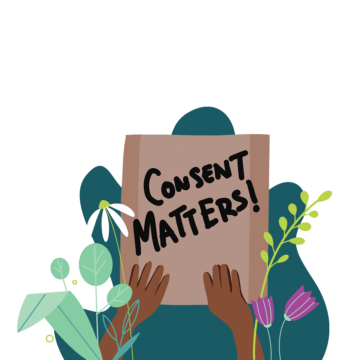Sexual assault can happen to any one.
85%
of adults know the person who harmed them.
When people are believed and supported, healing is possible and even probable.
How trauma works
Memories can be missing, disjointed or confusing, so it can be hard for people to remember and/or talk about their experiences.
People respond in all sorts of ways: there is no wrong way to respond.
It’s not your fault.
The only person responsible for sexual assault is the person who chooses to harm.

Creating a culture of consent
Creating a consent culture means changing commonly held beliefs about what sexual violence is, why it happens, and who should be held accountable for using abusive behaviours. It means being aware of power dynamics, and ensuring we respond respectfully to each other’s rights, bodily autonomy, and boundaries.
By making these choices to act, we can create a society in which consent is a priority.
Here are some ways that we can work together to promote a culture of consent:
Educate yourself about sexual violence
Practice consent and conversations about it in both sexual and everyday encounters
Understand how rejection makes you feel and ensure you are responding respectfully to boundaries set by others
Learn how to support those who experience sexual assault, sexual abuse, or sexual harassment
Address problematic language, victim blaming, and rape jokes when they come up
Support organizations working to confront the issue by volunteering, promoting, and donating
Challenge institutions that perpetuate or uphold rape culture and advocate for sexual violence policy and cultural change in institutions
Ask your workplace or school to educate its members about sexual violence

